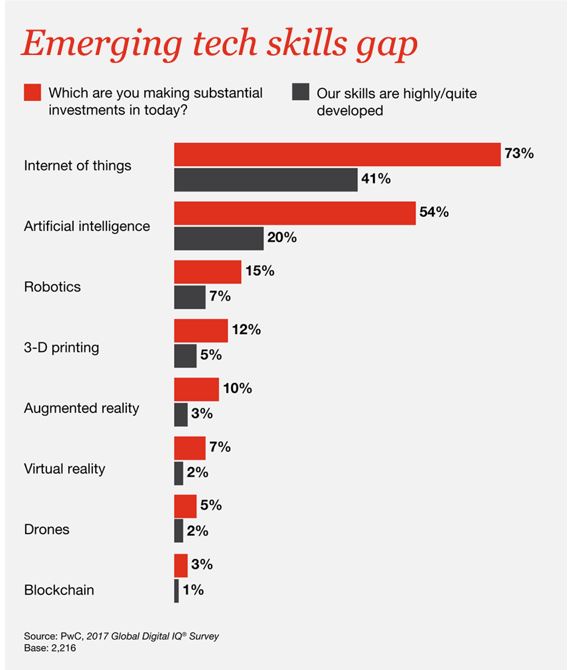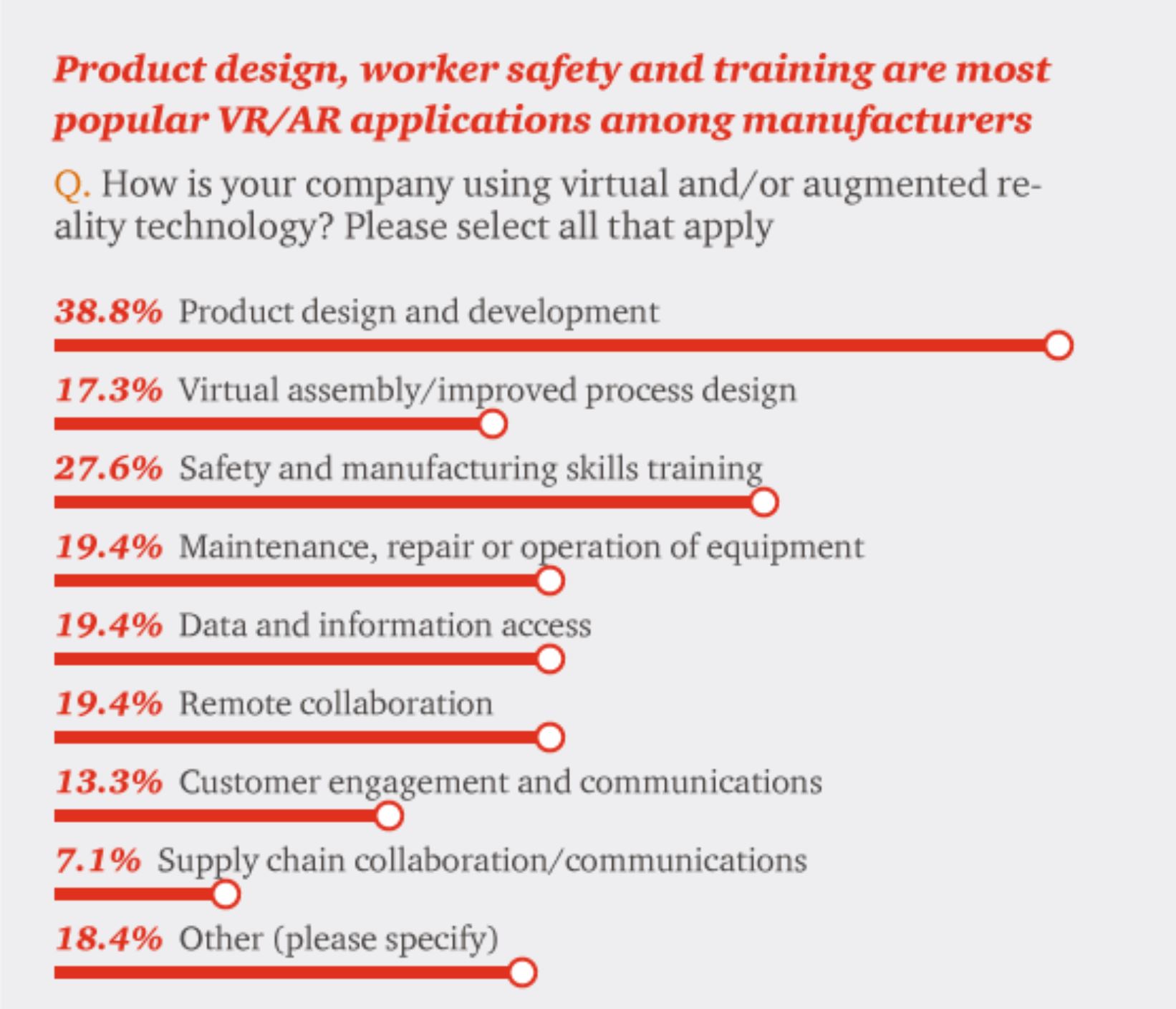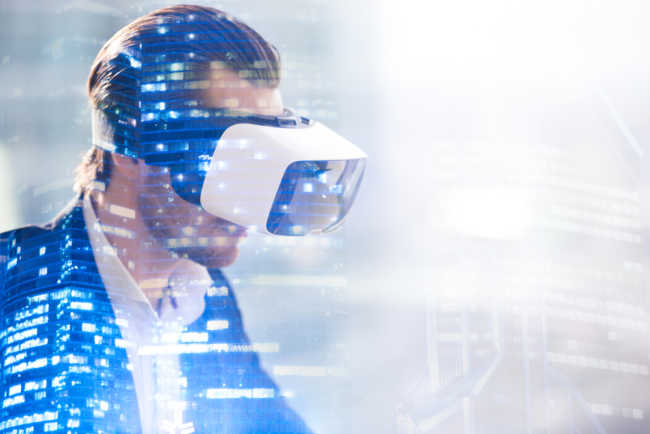Industrial Augmented Reality offers a way to bridge the skills gap
As outlined in our previous story on Industry 4.0, the challenges and opportunities facing the manufacturing sector are significant and global.
They include:
- Tackling the skills shortage that manufacturers are increasingly facing due to an aging workforce and the changing nature of manufacturing itself
- Managing the demands of a global supply chain that requires strong, effective, tight collaboration between different manufacturing sites, as well as a broad range of international suppliers, to prevent significant downtime. More about Unplanned Downtime: Causes, Calculations, and Cures
- Properly leveraging the huge amount of data available through the implementation of the IoT-based automated manufacturing scenarios that underpin “Industry 4.0”.
In fact, these challenges are closely tied to one another.
Just how closely they are linked was highlighted in a recent survey conducted by consulting giant PwC of 2,200 executives from enterprises in 53 countries.

In asking about their “Digital IQ” of these companies, PwC sought to get insight into where they saw a potential emerging skills gap.
The skills gap is growing
As you see from the chart, there is a significant skills gap relating to every area of technology investment that companies are using to improve their competitiveness, even in industrial augmented reality..
In many cases, only half the number of respondents said that their company already had the skills needed to effectively use a given technology (such as IoT) when compared against the percentage of respondents that were investing in that technology.
Supply chains and business are getting no less global
Meanwhile, global manufacturing businesses continue to grow and need to find better ways to effective manage the fact that complex products – from mobile phones to computers to new cars and planes – are chock full of raw materials and parts from all over the world.
The global nature of business requires that when there are issues with manufacturing equipment – or with the parts involved in a particular manufactured goods – enterprises need to have fast and efficient ways of resolving those issues and leverage the experience and skill of the manufacturers of who made the parts or equipment with which it is having problems.
Technology offers an answer
It’s clear from another PwC survey – the 2015 Disruptive Manufacturing Innovations Survey – that many companies are looking to augmented reality and virtual reality technology for solutions to these business challenges. More about the key role of Augmented Reality in Industry 4.0 for Manufacturing.

Industrial Augmented Reality provides a unique solution
Augmented Reality (AR) is a very specific application of wearable and handheld technologies. It provides a way to mitigate many of the business challenges manufacturing companies face.
Before we start looking in detail at the ways in which AR technology can help the manufacturers, let’s take a step back and define what Augmented Reality is.
AR is best described as the real world augmented by computer-generated sensory input. It is commonly delivered through head-mounted displays (also known as “smart glasses”), that are connected both to a phone-sized computer and to a collaborative network.
AR industry allows people to interact with:
- content that is displayed “virtually” in front of them via the smart glasses (which can include task lists, shop manuals, videos and online content)
- the functions of the computing power (in the smart glasses or attached smartphone or tablet) using voice commands, head movements, the trackpad that’s built into the side of some smart glasses or “gestures” (ie. commands delivered by hand movements of the smart glasses wearer and picked up by the front-facing on-board camera in the smart glasses)
- remote users through video-conferencing capabilities that offer a “see what I see” function that lets everyone on the video conference call see what the person who is speaking sees through their smart glasses
Augmented Reality scenario for manufacturing
To understand how augmented reality in IoT and manufacturing might be used, consider a scenario where a mechanic is repairing a problematic component.
In this case, it’s a car transmission in a new car. The mechanic is at the company’s factory in Michigan, and she is using AR technology (particularly “see what I see” video conferencing features) to collaborate on the repair of a car transmission with an automotive engineer in Canada (who worked on the original manufacture of the transmission before it was sent to Michigan for assembly).
The engineer can use smart glasses and to electronically “circle” a part that needs attention. The engineer in Canada can provide more detail guidance to the mechanic in Michigan, getting her to look more closely at various aspects of the transmission part that she is working on – and provide real-time feedback to the mechanic on the next steps that she needs to take.
If the problem turns out to be occurring throughout multiple transmissions being assembled on the line in Michigan – and these two auto workers can figure out in real time while working remotely – the savings to the company will be huge.
 This article was written by Geof Wheelwright, a technology journalist for more than 25 years (including work for The Times of London, the Financial Times, Newsweek, Time Magazine, The Guardian and trade publications such as Computerworld and Geekwire) and is now the Director of Marketing Communications for Mountain View, California-based Atheer, Inc.
This article was written by Geof Wheelwright, a technology journalist for more than 25 years (including work for The Times of London, the Financial Times, Newsweek, Time Magazine, The Guardian and trade publications such as Computerworld and Geekwire) and is now the Director of Marketing Communications for Mountain View, California-based Atheer, Inc.

